Notes
David Schalliol from Chicago: How Do You Photograph the Emergence of Nothing?
This is the third in a series of posts by David Schalliol documenting a South Side Chicago neighborhood being demolished to make way for a Norfolk Southern freight yard.
The view from the concrete pad where a set of row houses once stood on Chicago’s South Side (2013)
As I described in a previous post, I have been working on a project about a neighborhood being demolished. Each day, it looks less like the South Side Chicago I know and more like an urban prairie. For many residents, this new environment is a landscape of poignant absence: places where their homes, stores and friends used to be. For those few who remain, lingering memories are augmented by concerns. New threats have emerged in nearby derelict houses and lots. How strange it is to live in a new place without even moving.
This transformation presents its own challenges to my photographic process. Among them, how does one maintain visual continuity when the elements that occupied the frame are no longer there?
As I’ve mentioned before, the majority of my landscape work is trained on the overtly built environment. Even though I often work in neighborhoods where streetscapes are gap toothed from demolition, the remaining buildings are tall and narrow. Two or three stories high, they still fill the distance and wide-angle lenses I favor; however, all but eliminating buildings from the landscape means that my landscape photographs must also shift.
A block of still occupied homes, February 2012.
A field where houses once stood, May 2012.
So far, the two main adaptations I’ve made have been relatively straightforward. The first approach has been to photograph obvious gaps. This process was easier earlier in the project, when buildings framed derelict lots, containing the community absences. Now that the gaps are more common than the “teeth,” the framing works the other way around. Sometimes the only elements that prop up the verticality of the landscape are the trees and utility poles flanking missing houses, or alleys with no official purpose.
A resident walks between two remaining buildings, February 2012.
The one remaining house on its block, February 2013.
My other approach has been to give more attention to the relationship between the built and “natural” environments. Overgrown lots and decaying houses have illustrated that relationship since the beginning of the project, but fewer people in the neighborhood has meant fewer people to maintain it. Even with regular mowing, the empty blocks look more wild than tame, and limbs that block sidewalks and streets may not be cleared for days. They become lingering reminders of the need for maintenance and the new reality of a resource vacuum.
A downed limb blocks a street, September 2013.
Combined, these approaches tell half of the story, but there is a deeper problem with which I am still wrestling. One refrain I hear about the neighborhood is “This looks like Detroit!” In some ways, this statement is representative of how much the Motor City has become the go-to reference for urban decline, but I like to think it is also a reminder about the situation in Chicago and Detroit (and everywhere else, for that matter). Most people’s engagement with Detroit comes through photographs and video of the city as a nebulously deteriorating scene, where invisible and abstract social forces are to blame for decline. Here is the realm of ruin porn, where the aesthetics of dereliction trump visualization of the social causes of the condition. The city programs, the community stabilization funds and the corporate actors are nowhere to be found. Conversely, the resurgence in a few key neighborhoods in Detroit is fetishized in a different way through the obvious and very visible signs of redevelopment. With visual media like photography, it is so much easier to illustrate people “improving” a place than it is to represent those who actively undo it.
I understand how to solve this problem with a series of photographs and in moving pictures. I can shift my frame from the neighborhood to City Hall or the boardroom, and I have done some of that in this project. I can produce a sequential narrative of contrasting images, both still and moving, and – of course – I am doing that. But it is much harder to address the complexity of causes and effects in a single frame. While trying to express these forces in the context of local life, I photograph demolitions, community meetings and representatives of institutional authority, but none tells the whole story.
I am still working towards that image.
One of the first overt demolitions, February 2012.
PHOTOGRAPHS by David Schalliol
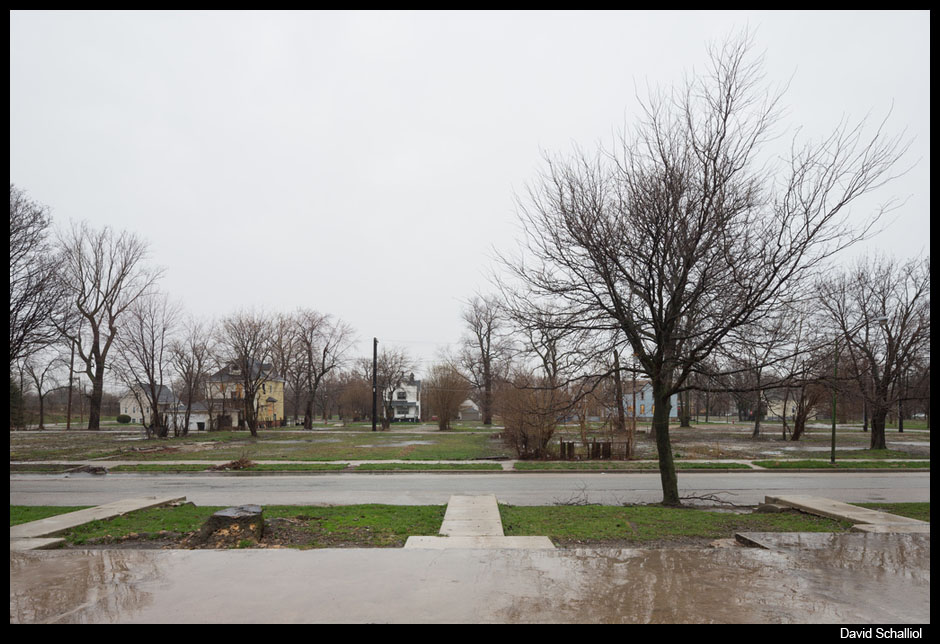
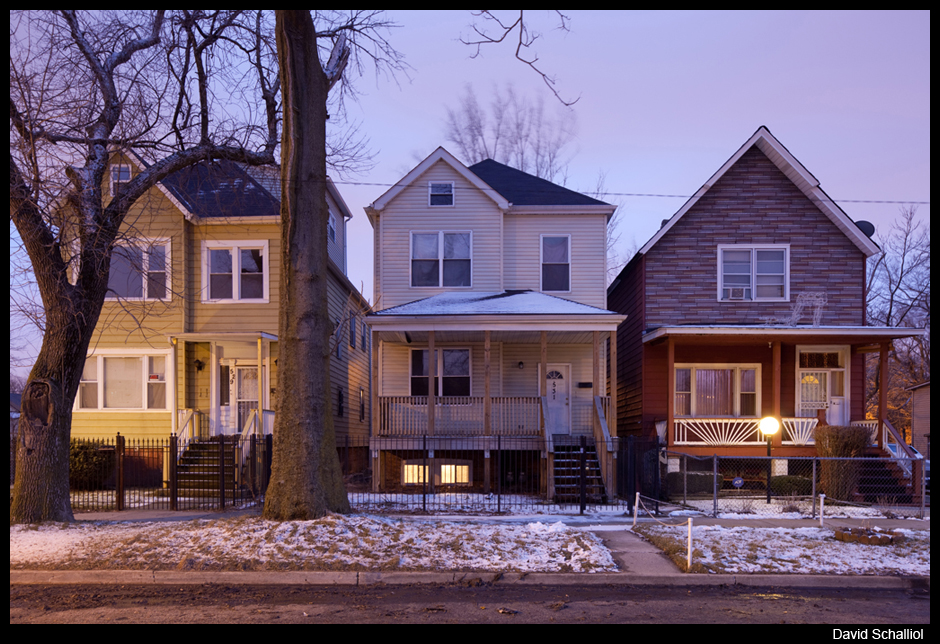
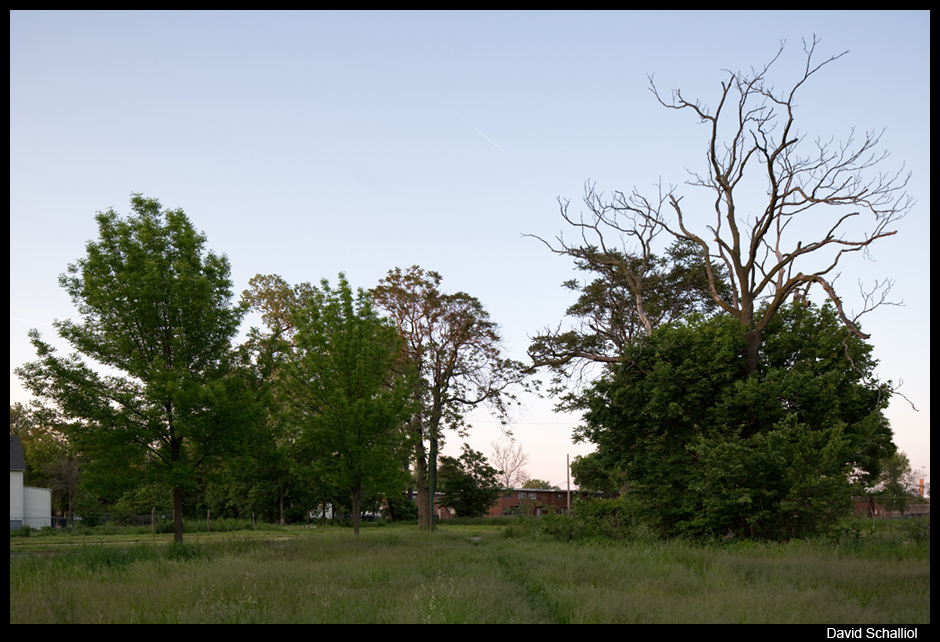
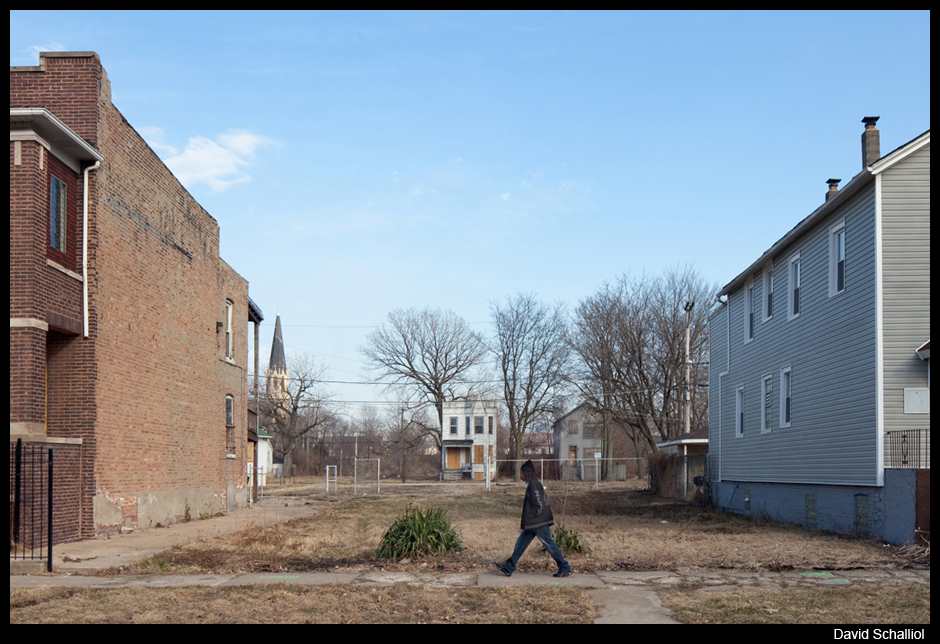
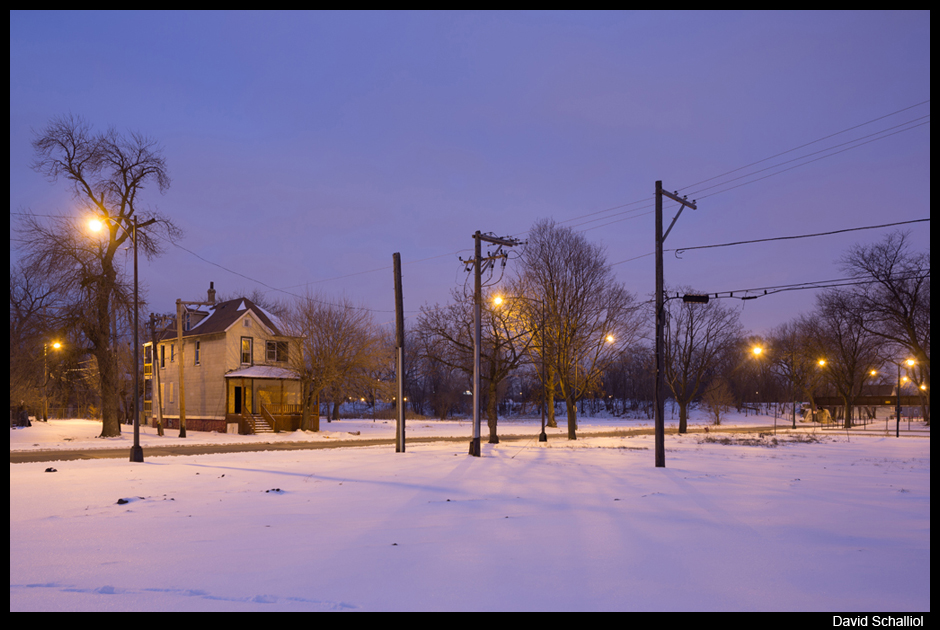
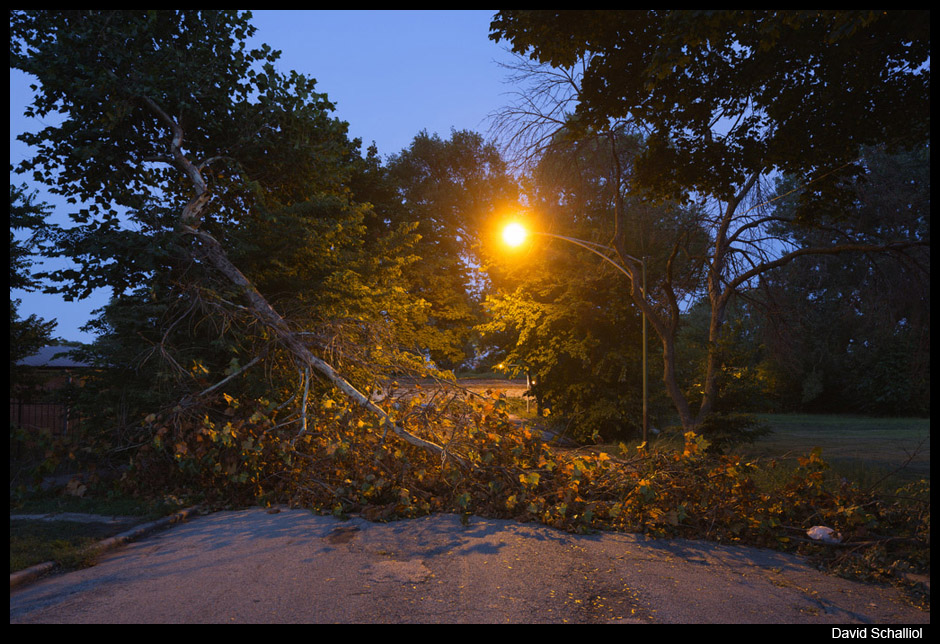
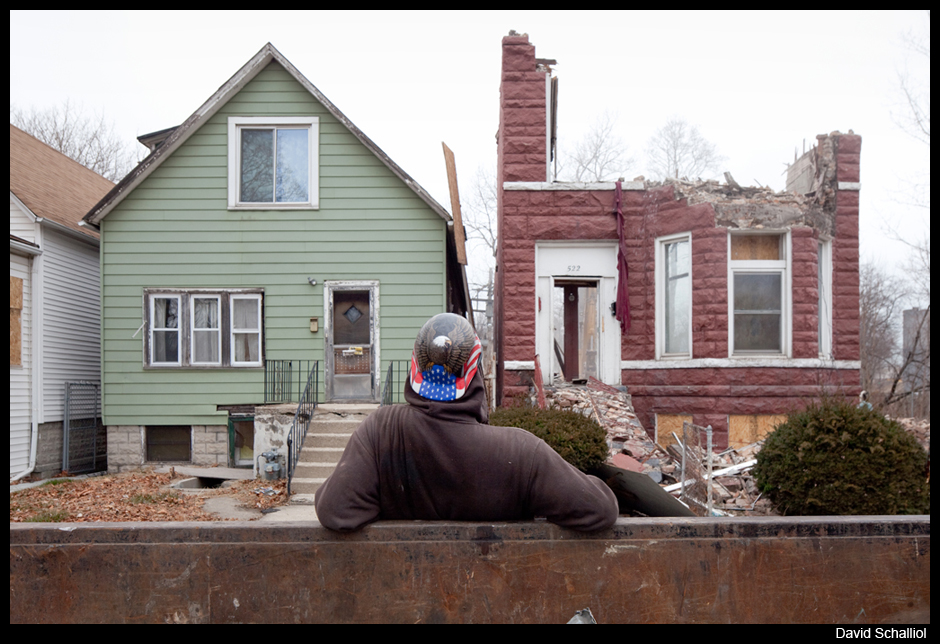


Reactions
Comments Powered by Disqus